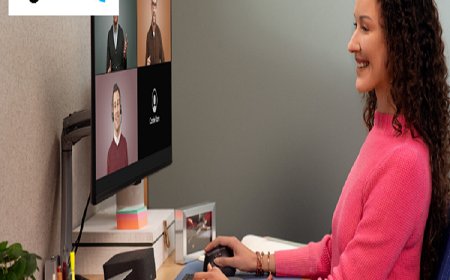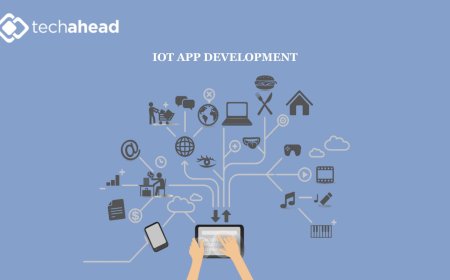Understanding the Workflow Behind an Uber Clone App
Discover the complete workflow behind an Uber Clone app, from user onboarding to real-time tracking and payments, for building a successful taxi booking platform.

In the rapidly growing digital economy, the demand for ride-hailing apps has surged due to the convenience and efficiency they offer. Among these, Uber has set the gold standard for what users expect from a taxi booking platform. Entrepreneurs and businesses aiming to tap into this thriving market often explore building an Uber Clone, a custom app that mirrors the core functionality and user experience of Uber.
This blog explores the complete workflow behind an Uber Clone app, from user onboarding to trip completion. Understanding this workflow is essential for anyone looking to enter the ride-hailing industry or improve their current services.
Introduction to the Concept of an Uber Clone App
An Uber Clone is not just a copy of the Uber app, but a tailored solution that replicates the functionality while allowing customization according to specific business requirements. It includes essential modules for passengers, drivers, and administrators. The idea is to launch a fully-functional ride-hailing service in a shorter time frame and at a lower cost compared to building a platform from scratch.
Uber Clone apps are typically used by startups, transport companies, and entrepreneurs who want to capitalize on the on-demand economy with a proven business model.
Registration and Onboarding for Drivers and Passengers
The workflow of an Uber Clone begins with the onboarding process. Users (both passengers and drivers) must register to use the app. Registration can be completed via phone number, email, or social media integration. Once registered, passengers can begin booking rides, and drivers must upload documents such as a valid license and vehicle registration.
The admin panel allows verification of driver credentials before approval. This ensures safety, compliance, and the quality of the service.
GPS-Based Location Detection and Map Integration
The Uber Clone app utilizes real-time GPS technology to detect the passengers location and suggest nearby drivers. Once the app opens, the users current location is automatically detected, thanks to integrated map services. Passengers can also manually enter a pick-up and drop-off point.
Map integration helps both passengers and drivers by showing the fastest route, estimated arrival times, and traffic conditions, thus making the ride more efficient and timely.
Ride Booking and Matching with Nearby Drivers
Once the location is confirmed, users can choose a ride type such as economy, SUV, or luxury. After entering the destination, the fare estimate and expected travel time are displayed. When the passenger confirms the booking, the system automatically matches them with the nearest available driver using a smart algorithm.
This step is critical as it determines service speed. The algorithm considers factors like driver proximity, route efficiency, and driver ratings to optimize the user experience.
Real-Time Ride Tracking and Driver Navigation
After a ride is accepted, passengers can track the driver in real-time as they approach the pick-up point. This transparency builds trust and enhances user satisfaction. The driver, on the other hand, receives real-time navigation assistance through integrated maps, helping them reach the passenger quickly.
This two-way tracking also adds a layer of safety. Passengers can share trip details with family or friends, while the company can monitor the entire ride from the admin panel.
Seamless Payment Integration and Fare Calculation
A vital part of any Uber Clone app is the fare calculation and payment system. Once the trip ends, the fare is calculated automatically based on distance, time, and dynamic pricing rules (such as peak hours or high-demand surcharges).
The app supports multiple payment modes including credit/debit cards, mobile wallets, and in some cases, cash. A digital invoice is generated and sent to the users app or email, making the transaction seamless and paperless.
Ratings, Reviews, and Feedback for Continuous Improvement
User feedback is integral to improving service quality. After every ride, passengers and drivers can rate each other and leave reviews. This feature not only builds trust in the platform but also helps the admin identify and address service issues quickly.
The rating system also impacts driver visibility and ride assignments. Drivers with consistently low ratings may be restricted or flagged for further review.
The Role of the Admin Panel in Managing Operations
Behind the scenes, a powerful admin panel ensures the Uber Clone app functions smoothly. It allows the platform owner or team to manage drivers, passengers, transactions, disputes, promotions, and analytics. From here, they can activate or deactivate users, view live ride data, and monitor business performance in real-time.
The admin dashboard is the control center for the entire ecosystem, playing a vital role in operations, safety, and business strategy.
Technology Stack Used in Building an Uber Clone
An Uber Clone is a product of several integrated technologies working together. It generally includes:
-
Frontend: Developed using technologies like React Native or Flutter for cross-platform apps
-
Backend: Node.js or Python frameworks like Django for server logic
-
Database: MySQL or MongoDB for storing user, ride, and transaction data
-
Maps and Navigation: Google Maps API or Mapbox for real-time location and routing
-
Push Notifications: Firebase or OneSignal for real-time alerts
-
Payment Gateway: Stripe, PayPal, or Razorpay for secure transactions
Choosing the right tech stack ensures app scalability, security, and high performance across devices.
Choosing the Right Development Partner
The success of your Uber Clone largely depends on the team that builds it. A professional On Demand App Development Company with experience in Taxi Booking App Development can deliver a scalable and customizable solution tailored to your needs.
You can also consult firms offering Mobile App Development services to ensure the app is secure, responsive, and compliant with regulations. These experts often provide ongoing support, maintenance, and updates to keep your app running efficiently in a competitive market.
Some businesses also explore acquiring an App For Sale that includes the core Uber Clone features and can be quickly rebranded and launched.
Final Thoughts
Creating a successful Uber Clone app is not just about copying features but about understanding and optimizing the user experience. Each component from registration to payment and feedback needs to be designed with precision. Continuous monitoring and iteration based on user behavior and market trends will further enhance the performance of your app.
By mastering the workflow and collaborating with the right development team, entrepreneurs can build a robust, user-friendly ride-hailing platform that competes effectively in todays on-demand economy.





























